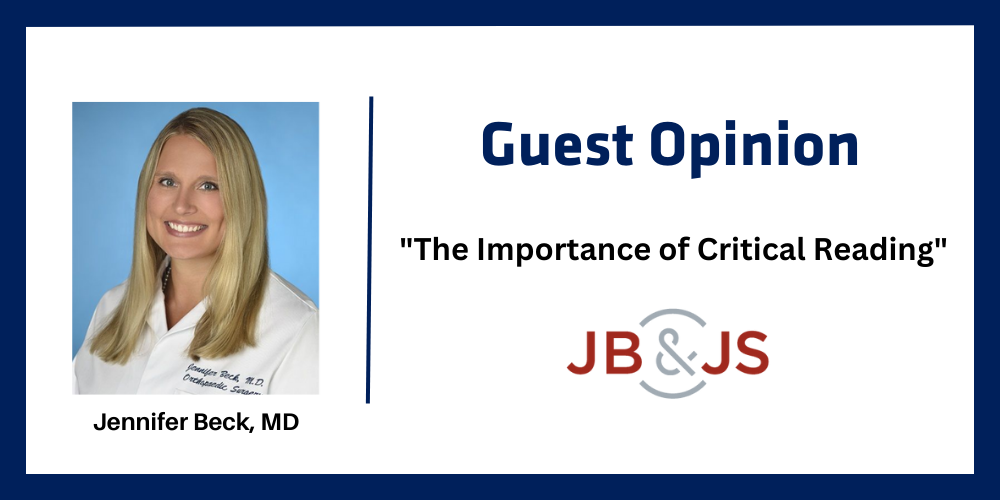This guest post comes from Jennifer Beck, MD, a pediatric sports medicine surgeon at Boulder Medical Center in Colorado and a member of the JBJS Social Media Advisory Board.
A recent study in NEJM Evidence presents the 11-year follow-up of a randomized clinical trial involving 121 young adults treated for an acute sports-related anterior cruciate ligament (ACL) tear. The patients (mean age, 26 years; 74% male) were randomized to receive either early ACL reconstruction (ACLR) followed by exercise therapy or early physical therapy with optional delayed ACLR. Two and five-year results were previously reported.
In the current study, “Treatment for Acute Anterior Cruciate Ligament Tear in Young Active Adults”1, the primary outcome was the change from baseline in the mean of 4 subscales of the Knee Injury and Osteoarthritis Outcome Score (KOOS) at 11 years. Radiographic signs of osteoarthritis were among the other outcomes assessed. Follow-up data were available for 53 of 62 patients in the early reconstruction group and 54 of 59 patients in the optional late reconstruction group. Within the group assigned to optional delayed ACLR, 52% went on to undergo ACLR, nearly all of them within the first 5 years of the study. At 11 years, the authors found no differences in outcomes between the as-randomized groups.
While I read this study with interest, in my opinion, a more detailed review of the outcomes is impeded by the investigation’s shortcomings. For instance, it is difficult to evaluate the relative superiority or non-superiority of the studied treatments when assessed within a small cohort. Decades into ACL research, we now find that more robustly powered registry and randomized controlled studies with sample sizes in the multiple hundreds to thousands are being reported.
In addition, I am left with questions regarding aspects of the study design. For example, the utilization of 2 graft options for reconstruction (hamstring or patellar tendon) may confound the results, with detailed outcomes by graft type also not provided. An important reported exclusion is the presence of a meniscal tear of ≥10 mm requiring “extensive repair” (which, from previous reports on the cohort, means meniscal tears altering the rehabilitation protocol). However, in both cohorts, a number of patients underwent partial meniscectomies for smaller tears, the use of which and the timing of when performed could also have impacted outcomes. Furthermore, only 67% of the early ACLR patients achieved mechanical stability based on the Lachman test, prompting my curiosity about the surgical techniques employed. The generalizability of this study also may be limited, for example, in terms of surgeon volume (>40 ACLs/year) and the number of physical therapy sessions provided (mean of 63 in the operative group and 53 in the delayed-reconstruction group).
When I reflect on the study, I am reminded of the need to prioritize the critical reading and evaluation of scientific papers in medical education. Simply skimming the abstract and conclusions of this paper could give the reader a biased interpretation of this study. You could gloss over the fact that >50% of the patients in the optional ACLR arm did, in fact, cross over to reconstruction, or some of the other finer details that make this small study flawed in my opinion, despite its being a randomized clinical trial. Journal clubs are often seen as “extra work” for medical staff and students, but the ability to critically evaluate research studies in any journal, and to engage in constructive conversation regarding the literature, must be maintained throughout medical education and practice so we can continually learn and evaluate our surgical techniques while providing the best possible care for our patients.
Jennifer Beck, MD
References
- Lohmander LS, Roemer FW, Frobell RB, Roos EM. Treatment for Acute Anterior Cruciate Ligament Tear in Young Active Adults. NEJM Evidence. 26 June 2023. DOI: 10.1056/EVIDoa2200287



